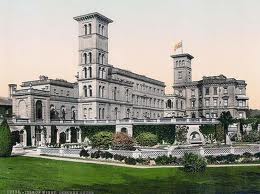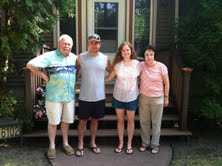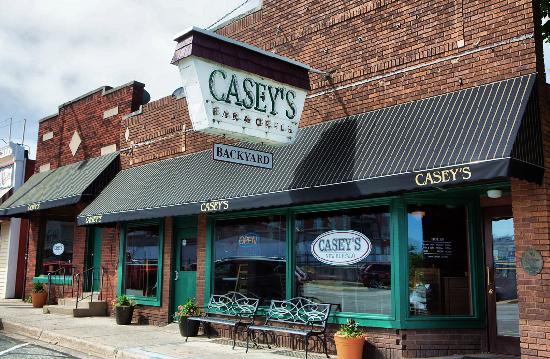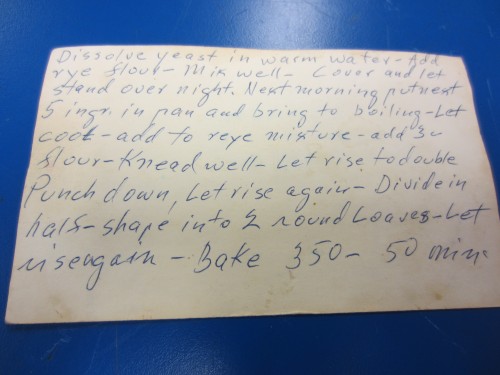I have been kind of neutral on the whole gay marriage issue. I think it began as an artifact of the AIDS epidemic and an attempt to curb the promiscuity of male gay life. It has been taken over by activists who are determined to validate their life style and to force conventional society to accept it as equivalent to heterosexual family life, which it is not. It is surprising the success they have had with the young who seem to accept the argument that it is a civil rights” issue, which is, of course, nonsense. Mark Steyn usually has something worthwhile to say on most subjects and this time is no exception.
Gays will now be as drearily suburban as the rest of us. A couple of years back, I saw a picture in the paper of two chubby old queens tying the knot at City Hall in Vancouver, and the thought occurred that Western liberalism had finally succeeded in boring all the fun out of homosexuality.
He does have a sense of humor amid reflections on a dying culture.
In the upper echelons of society, our elites practice what they don’t preach. Scrupulously nonjudgmental about everything except traditional Christian morality, they nevertheless lead lives in which, as Charles Murray documents in his book Coming Apart, marriage is still expected to be a lifelong commitment. It is easy to see moneyed gay newlyweds moving into such enclaves, and making a go of it. As the Most Reverend Justin Welby, the new Archbishop of Canterbury and head of the worldwide Anglican Communion, said just before his enthronement the other day, “You see gay relationships that are just stunning in the quality of the relationship.” “Stunning”: What a fabulous endorsement! But, amongst the type of gay couple that gets to dine with the Archbishop of Canterbury, he’s probably right.
The problem, as pointed out years ago by Vice President Dan Quayle, is that the elites set the pattern for those whose lives cannot succeed without the structures of traditional society. They set the pattern, unfortunately, by what they say, not what they do.
If the Right’s case has been disfigured by delusion, the Left’s has been marked by a pitiful parochialism. At the Supreme Court this week, Ted Olson, the former solicitor general, was one of many to invoke comparisons with Loving v. Virginia, the 1967 case that struck down laws prohibiting interracial marriage. But such laws were never more than a localized American perversion of marriage. In almost all other common-law jurisdictions, from the British West Indies to Australia, there was no such prohibition. Indeed, under the Raj, it’s estimated that one in three British men in the Indian subcontinent took a local wife. “Miscegenation” is a 19th-century American neologism. When the Supreme Court struck down laws on interracial marriage, it was not embarking on a wild unprecedented experiment but merely restoring the United States to the community of civilized nations within its own legal tradition. Ted Olson is a smart guy, but he sounded like Mary-Kate and Ashley’s third twin in his happy-face banalities last week.
These facts are never mentioned in the debate, swiftly being lost by those trying to preserve traditions. I have no credibility here, as I have been divorced twice. The issue for me is not the religious status of marriage but the dissolution of traditional morality as a utilitarian mechanism of civilization. My older son, who considers me hopelessly out of date, was married in the Catholic Church and will mostly likely lead a life of conservative virtues while he attacks those who try to defend them. I know he resents the fact that his mother and I are divorced and I don’t blame him. Had I recognized the terrible damage done to children by divorce, I might have reconsidered. However, I have children born of another marriage and would not wish them away for anything. The dilemma is insoluble but I could afford to take care of everyone, even though it has left me somewhat strapped in my old age.
The reality that no one wants to confront is as follows:
Meanwhile, social mobility declines: Doctors who once married their nurses now marry their fellow doctors; lawyers who once married their secretaries now contract with fellow super-lawyers, like dynastic unions in medieval Europe. Underneath the self-insulating elite, millions of Americans are downwardly mobile: The family farmers and mill workers, the pioneers who hacked their way into the wilderness and built a township, could afford marriage and children; indeed, it was an economic benefit. For their descendants doing minimum-wage service jobs about to be rendered obsolete by technology, functioning families are a tougher act, and children an economic burden. The gays looked at contemporary marriage and called the traditionalists’ bluff.
There is the rub. We did not appreciate how important traditional values were for a civil society, Black activists blame slavery for the collapse of the black family. In fact, the black family was in good shape until the Great Society devastated the role of the black father. It was often non-traditional, as illustrated in Clarence Thomas’s book My Grandfather’s Son, in which he describes how his old fashioned grand father raised him and his brother in spite of the hopelessly disorganized life of his mother.
The “learned behavior” types who think man is a “blank slate” at birth and all behavior is cultural are already striking back in the NY Times. In their view, differences in mating behavior between males and females is all learned from cultural “norms.” As one recent paper by a female professor states:
the gender differences in acceptance of casual-sex proposals evaporated nearly to zero.
Therefore women = men in all respects. The old theory that women are more likely to be monogamous because they invest more in children than men do, is old fashioned patriarchal nonsense. The argument heads right to the blank slate debate.
“a leading voice among hard-line Darwinians” You see, if you disagree with the Times, you are “hard line.”
“But the fact that some gender differences can be manipulated, if not eliminated, by controlling for cultural norms suggests that the explanatory power of evolution can’t sustain itself when applied to mating behavior.”
Therefore gay marriage has to be good because women = men.
Some years ago, I was on a trip with my middle daughter who has a degree in Anthropology from UCLA. I had been reading Stephen Pinker’s book, “The Blank Slate”. He makes a pretty good argument, from identical twin studies among other evidence, that behavior is genetic. She refused to read it and told me I needed to read the apostle of behavioral theory, Stephen Jay Gould, whose book, “The Mismeasure of Man is the bible of behaviorists. I told her that I owned the book and had already read it. She still refused to read Pinker’s book, one of about ten he has written on behavior and language. Gould, of course, is a favorite of the left. Among other points, he dismisses IQ testing of any kind. That is handy for the Humanities types who hate the STEM majors.
I was raised, along with my sister, by a black nursemaid who instilled in us the traditions of family life. Her own family in Georgia owned property and she had been raised to value traditional virtues. She was strict and once when I called her the hated “n word” she chased me under the dining room table with a broom. She had chosen a life of celibacy to raise other people’s children. We were not her first family but we were her last. She was 40 when she came to live with us when my sister was born in 1941. She lived a long life and even saw my youngest daughter, born in 1990. She was in a Catholic nursing home at the time but we brought Annie for her approval.
What is coming I fear but I am relieved that I shall not have to deal with it. I am too old and my health is not good. I do worry about my children but three of them voted for Obama and can take what comes as best they are able. They have the advantages I have been able to provide. They are educated and, while my behavior has not been exemplary in some ways, they have seen the world and they know I love them. When I started out, I had none of the advantages they have had. My father did not respect education, although he did send me to Catholic school. I began college on a scholarship but it was not the college of my choice. I did succeed in gaining admittance to medical school but would have preferred other sources of training. All in all though, I can’t really complain.
The future will be what it will be. I hope for the best but fear the worst. In the coming hurricane, gay marriage will seem, and be, a minor distraction.













































